
Tag Archives Calves

Changing feeding programs after calving
Nutrition with Barry Yaremcio
Cows and bred heifers require 25 per cent more nutrients after calving than during late pregnancy. Milk production peaks eight weeks after calving. Feed intake increases until 12 weeks after calving. The increased feed intake is the result of the digestive system expanding to fill the space that was occupied by the fetus and reproductive […] Read more
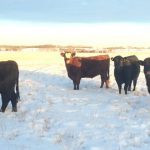
Klassen: Positive fed outlook buoys feeder market
Market telling producers to own lighter cattle sooner rather than later
Western Canadian feeder cattle prices for 800-pound plus cattle were $2/cwt to $4/cwt higher on average for the week ending January 27. Feeders in the 500-800-pound category were up $3/cwt to $6/cwt with higher quality groups up as much as $10/cwt in some cases. Feeders 500 pounds and lower were unchanged from seven days earlier.
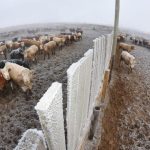
Klassen: Feeder market holds value despite negative margins
U.S. demand limited with colder temperatures in Midwest
Calf markets appeared to trade $2 to $3 above week-ago levels on average. Feedlot margins on current pen close-outs are negative $300 to $350 per head but replacement markets haven’t missed a beat. Finishing feedlots were once again bidding aggressively on backgrounded cattle with fleshier types experiencing limited slippage. Larger pen sized groups were on the higher end of the priced spectrum with buyers avoiding smaller packages.

Klassen: Yearling return to the lineup on strong demand
Frigid temperatures result in limited volumes
The market hasn’t missed a beat and started the year where it left in December. The only difference is there are larger supplies of yearlings coming on stream. The benchmark levels had backgrounded steers averaging 1,000 pounds trading from $280-$285/cwt with top bids rounding at $290/cwt. Steers averaging 850-pounds were averaging $300/cwt with top-notch larger groups peaking at $305.
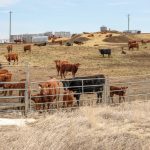
Klassen: Cattle producers anxious about 2024
No sales the first week of 2024 as markets assess inventory, plan strategy
The holiday break for the cattle market is analogous to an the intermission between periods of hockey game. Feedlot operators assess inventory and to focus on the market structure. They’re planning their purchase strategy for the next couple months.
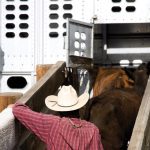
Klassen: Feeder market quiets at year-end
Feeding margins have moved into negative territory, setting a negative tone for replacements
The last full week of 2023 was characterized by lower volumes and limited buying interest. Feedlot operators don’t want to weigh down schedules of hired hands over the holidays. Many auction barns were closed for the season while some held bred cows and bred heifer sales.
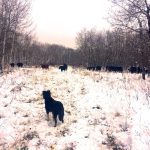
Klassen: Feeder market ends year on mixed sentiment
Some feedlots becoming backed up with heavier cattle, setting negative tone for feed complex
Western Canadian feeder cattle markets were unchanged, to as much as $10 lower compared to last week.
Demand for heifers was suffering last week. A weaker tone was noted in the Eastern prairie regions as Ontario demand appeared to evaporate last week. Alberta packers were buying fed cattle on a dressed basis in the range of $368-$370/cwt, down $7-$8 from last week.

Klassen: Year-end buying interest boosts feeder market
Feedlot operators gearing up for shortfall in overall numbers in the first half of 2024
Strength was noted in calves under 650 pounds while feeders over 700 pounds were relatively unchanged. Larger packages of weaned quality genetics were $8 to $10 higher in some cases.
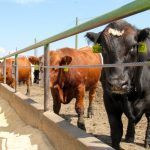
Klassen: Feeder market bounces on lower volumes
Feedlot operators believe yearling numbers will be down in March and April
Strength was noted in Manitoba and Saskatchewan while a softer tone was evident in Alberta. Once again, buyers shrugged off the weaker feeder cattle futures and the focus was on filling year-end orders. Alberta and Saskatchewan feedlots are carrying larger numbers but there appears to be sufficient bunk capacity available to sustain the price structure.

Klassen: Strong demand continues to support feeder market
Significant downside risk ahead
For the week ending Nov. 25, western Canadian yearling prices were $4-$8/cwt lower compared to seven days earlier. However, calf markets were firm trading $5-$8/cwt on either side of unchanged compared to values quoted a week prior. Optimal weather in southern Alberta caused major feedlot operators to stretch their hands across the Prairies. At the […] Read more



